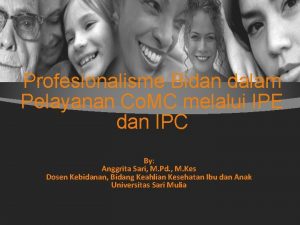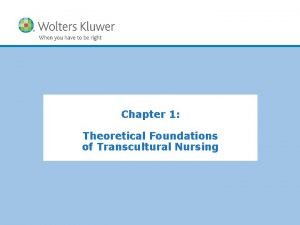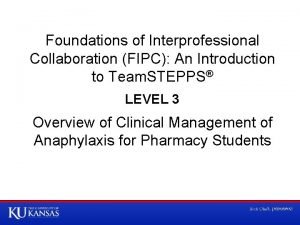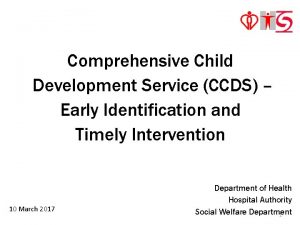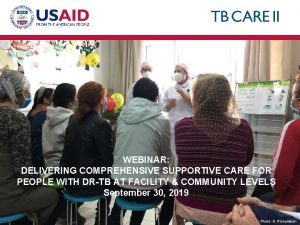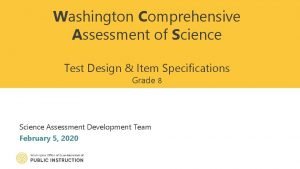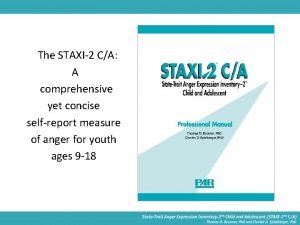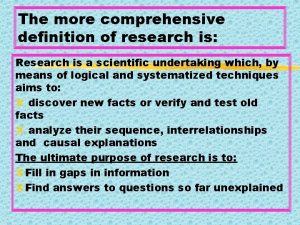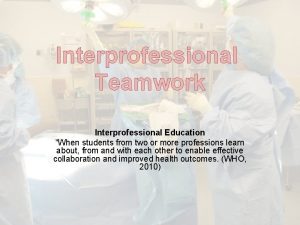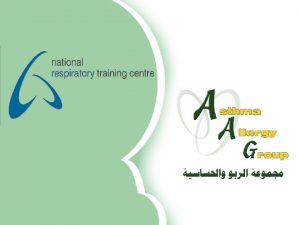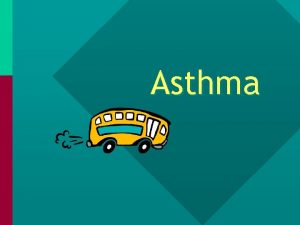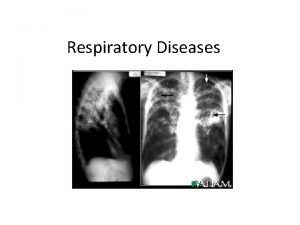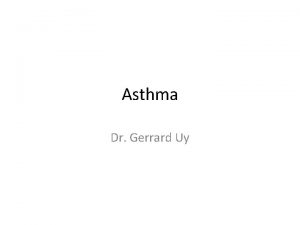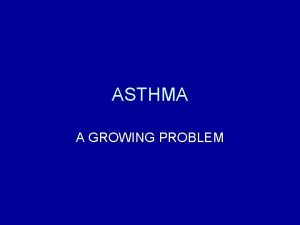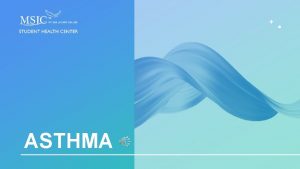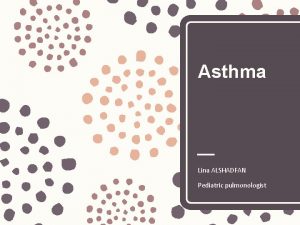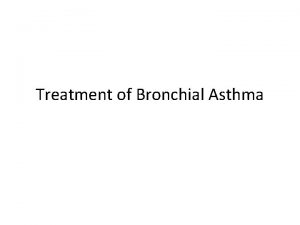Interprofessional Asthma Education Development of a Comprehensive Asthma













- Slides: 13

Interprofessional Asthma Education: Development of a Comprehensive Asthma Rotation in a Pediatric Residency Carolyn C Robinson 4/30/2014 Pediatrics

1. Problem Identification and General Needs Assessment Problem Identification - Health Care Problem - Current Approach - Ideal Approach • Importance of asthma ‐ Over 6 million children ‐ 4. 76. million officeand visits yearly Evaluation Feedback 2. Targeted Needs Assessment ‐ 700, 000 visits to Learners an emergency room; 200, 000 hospitalizations - Learners - Individual - Programin asthma management • Lack competency - Learning Environment ‐ Knowledge ‐ Meter Dosed Inhaler (MDI) technique Percent Correct 80 60 100 Deficiencies in Knowledge * * 5. Implementation Pre‐test Post‐test * Percent of Residents 100 Deficiencies in MDI Instruction 80 60 3. Goals and Objectives Pre‐Test * - Broad Goals Post‐Test - Obtaining Political - Specific Measurable Objectives Support 40 40 * - Securing Resources * - Addressing Barriers 20 20 - Introducing the Curriculum 4. Educational Strategies - Content 0 0 - Administering the Curriculum - Methods Pathophysiology Diagnosis Management Inadequate Adequate Good Changes in knowledge after online didactic. p<0. 05 Overall assessment before and after instruction. p<0. 001 Hemnes. Journal of Asthma Kim. Journal of Asthma 2009 Kern’s Six Step Approach to Curriculum Development Pediatrics Page 1 xxx 00. #####. ppt 9/24/2020 11: 21: 17 PM

1. Problem Identification and General Needs Assessment - Health Care Problem - Current Approach - Ideal Approach Percent of responses 80 6. Evaluation and Feedback for. Learners Curriculum - Need Individual - Program 20 0 3. 5 Resident n=54 Faculty n=34 60 40 4 2. Targeted Needs Assessment Location of Curriculum - Learners - Learning Environment Resident n=54 Faculty n=28 3 2. 5 5. Implementation Rating 100 3. Goals and Objectives 2 - Broad Goals - Obtaining Political - Specific Measurable Objectives Support - Securing Resources 1. 5 - Addressing Barriers - Introducing the Curriculum 4. Educational Strategies 1 Content Administering the Curriculum Outpatient Emergency Pediatric PICU Yes Maybe No - Methods Room Floor Faculty and resident response to need for curriculum Faculty and resident response on location of training Rating on a Likert Scale 1=Least Needed to 4=Most Needed Kern’s Six Step Approach to Curriculum Development Pediatrics Page 2 xxx 00. #####. ppt 9/24/2020 11: 28 PM

1. Problem Identification and General Needs Assessment Goals and Objectives - Health Care Problem - Current Approach - Ideal Approach • Goal 6. Evaluation and Feedback 2. Targeted Assessment ‐ Understand key aspects of outpatient asthma care Needs in children. - Individual Learners - Program - Learners - Learning Environment • Objectives ‐ Obtain a comprehensive history of an asthmatic patient ‐ Accurately classify severity based on NHLBI guidelines ‐ Describe the control status according to NHLBI guidelines 3. Goals and Objectives 5. Implementation - Broad Goals - Obtaining Political ‐ Recognize characteristics for increased risk of ICU hospitalization - Specific Measurable Objectives Support - Securing Resources ‐ Recognize for referral to pulmonary medicine - Addressingindications Barriers - Introducing the Curriculum 4. Educational Strategies ‐ Teach the proper MDI and- aerochamber technique Content - Administering the Curriculum ‐ Develop a plan for optimal- Methods asthma control Kern’s Six Step Approach to Curriculum Development Pediatrics Page 3 xxx 00. #####. ppt 9/24/2020 11: 21: 34 PM

1. Problem Identification and General Needs Assessment Educational Strategies - Health Care Problem - Current Approach - Ideal Approach • Interprofessional 6. Evaluation and Feedback. Education 2. Targeted Needs Assessment - Individual Learners - Learners Therapists ‐ Asthma Educator, Clinical Pharmacist, Respiratory - Program • Comprehensive Approach - Learning Environment ‐ All aspects of asthma care • Variety of Educational Methods ‐ 5. Different learning styles Implementation 3. Goals and Objectives - Obtaining Political • Condensed Support - Broad Goals - Specific Measurable Objectives - Securing ‐ Short one. Resources week block - Addressing Barriers - Introducing the Curriculum 4. Educational Strategies - Content - Administering the Curriculum - Methods Kern’s Six Step Approach to Curriculum Development Pediatrics Page 4 xxx 00. #####. ppt 9/24/2020 11: 21: 36 PM

Educational Methods • Lecture • Reflection • Self Directed Learning • Patient Interaction ‐ “Empty Outlines” ‐ “Instructor Storytelling” ‐ “Pop culture” ‐ Syllabus of articles ‐ Online asthma modules ‐ Scavenger hunt ‐ “Muddiest Point” ‐ “Harvesting” ‐ “One minute papers” ‐ Counseling ‐ Interpretation of Spirometry ‐ Evaluation ‐ Skills instruction • Direct Observation www. notonemorelife. org Pediatrics Page 5 xxx 00. #####. ppt 9/24/2020 11: 21: 37 PM

1. Problem Identification and General Needs Assessment Implementation - Health Care Problem - Current Approach - Ideal Approach • Support 6. Evaluation and Feedback 2. Targeted Needs Assessment ‐ Residency program medical educators - Individual Learners leadership, chief residents, and - Learners - Program ‐ Pulmonologists, pulmonary fellowship program - Learning Environment • Resources ‐ Interprofessional collaborators ‐ Authors of online material 5. Implementation ‐ Syllabus of articles 3. Goals and Objectives - Obtaining Political Support - Securing Resources Scheduling - Addressing Barriers - Introducing the Curriculum 4. Educational Strategies Standardization - Content - Administering the Curriculum - Methods • Barriers ‐ ‐ - Broad Goals - Specific Measurable Objectives • Curriculum introduced July 2013 www. notonemorelife. org Pediatrics Kern’s Six Step Approach to Curriculum Development Page 6 xxx 00. #####. ppt 9/24/2020 11: 21: 39 PM

Weekly Schedule Day 1 • Introduction • Didactic Lecture with pulmonary fellow • Online Modules • Reading of Articles • Pre‐assessment of asthma knowledge and Meter Dose Inhaler (MDI) skills • Taste testing with clinical pharmacist Pediatrics Day 2 • Direct Patient Care and Physician Modeling with pulmonary attending at in After Hospital Asthma and Life Threatening Asthma Clinics Day 4 Day 3 Day 5 • Participate • Wrap up with asthma • Direct Patient lecture with educator Care and questions Physician • Participate • Post‐ Modeling at with assessment of Health Centers Pulmonary asthma with Diagnostic Lab knowledge pulmonary and MDI skills attending respiratory • Activities Evaluation therapists Interprofessional Educational Activities Page 7 xxx 00. #####. ppt 9/24/2020 11: 21: 41 PM

1. Problem Identification and General Needs Assessment Improvement in Knowledge: Written Test Objective - Health Care Problem - Current Approach - Ideal Approach Before Obtaining a comprehensive history of an asthmatic patient 6. Evaluation and Feedback p=0. 001 n=26 - Individual Learners Indications for the use of different inhaler devices - Program 2. 8 After p value 4. 48 Needs Assessment <0. 001 2. Targeted p<0. 001 - Learners n 25 1. 96 n=26 - Learning 4. 28 Environment <0. 001 25 Being able to teach the proper inhaler technique 1. 56 4. 56 n=24 <0. 001 25 Classifying the severity of asthma per NHLBI guidelines 2. 36 4. 08 <0. 001 25 Determining 5. asthma control status per NHLBI guidelines Implementation 2. 16 4. 04 <0. 001 3. Goals and Objectives 25 - Broad Goals - Obtaining Political Recognizing patients at risk for ICU hospitalization 2. 52 4. 04 Measurable <0. 001 - Specific Objectives 25 Support - Securing Resources Indications for referral to Pulmonary 2. 24 3. 92 <0. 001 25 - Addressing Barriers 4. Educational Strategies - Introducing the Curriculum - Content - Administering Developing an outpatient planthe for. Curriculum optimal asthma control 4. 36 (did not<0. 001 25 (at 2. 36 end of rotation) take rotation) - Methods Self perceived knowledge before and after the rotation. Likert Scale 1=Not knowledgeable to 5=very knowledgeable Kern’s Six Step Approach to Curriculum Development Pediatrics Page 8 xxx 00. #####. ppt 9/24/2020 11: 21: 48 PM

Improvement in Skill: MDI Technique p<0. 001 n=24 (at end of rotation) Based on checklist of items necessary to perform the skill proficiently Pediatrics Page 9 xxx 00. #####. ppt 9/24/2020 11: 21: 52 PM (did not take rotation)

Satisfaction • 100% of residents ‐ Rotation should be offered again ‐ Rotation should be required ‐ Would recommend the rotation to a colleague ‐ Plan to implement what they learned in their future career Satisfaction with Rotation Components Rating 5 4 3 2 1 Clinic Asthma Didactic Rotating in Reading Online Education Lecture PDL Syllabus Modules Rating on a Likert Scale of usefulness (n=25). 1=Not useful 5=Most useful. Pediatrics Page 10 xxx 00. #####. ppt 9/24/2020 11: 21: 54 PM

Conclusions • Positive learning experience on outpatient asthma care • Benefits of using a structured framework • Uses an innovative, comprehensive approach to teaching of asthma ‐ IPE is an excellent tool • Significant improvement ‐ Written test scores and MDI technique • Framework for other departments • Future Directions: Sustainability and Retainability Pediatrics Page 11 xxx 00. #####. ppt 9/24/2020 11: 21: 57 PM

Acknowledgements • Dr. Jen Rama • Dr. Mark Ward • Dr. Siby Moonnumakal • Dr. Robert Moore • Dr. Julie Katkin • Pulmonary Diagnostic Lab • Kai Sanders Pediatrics Page 12 xxx 00. #####. ppt 9/24/2020 11: 21: 58 PM
 Status asthmaticus pathophysiology
Status asthmaticus pathophysiology Ipe dalam kebidanan
Ipe dalam kebidanan Theoretical foundation of nursing chapter 1
Theoretical foundation of nursing chapter 1 Transprofessional vs interprofessional
Transprofessional vs interprofessional Interprofessional care for anaphylaxis
Interprofessional care for anaphylaxis How to write a comprehensive report
How to write a comprehensive report Explain in detail comprehensive interventions
Explain in detail comprehensive interventions Comprehensive rural development programme
Comprehensive rural development programme Manual of parenting capacity assessment framework swd
Manual of parenting capacity assessment framework swd Villanova premed
Villanova premed Comprehensive care plan
Comprehensive care plan Washington comprehensive assessment of science
Washington comprehensive assessment of science Staxi-2 c/a
Staxi-2 c/a Comprehensive research definition
Comprehensive research definition

